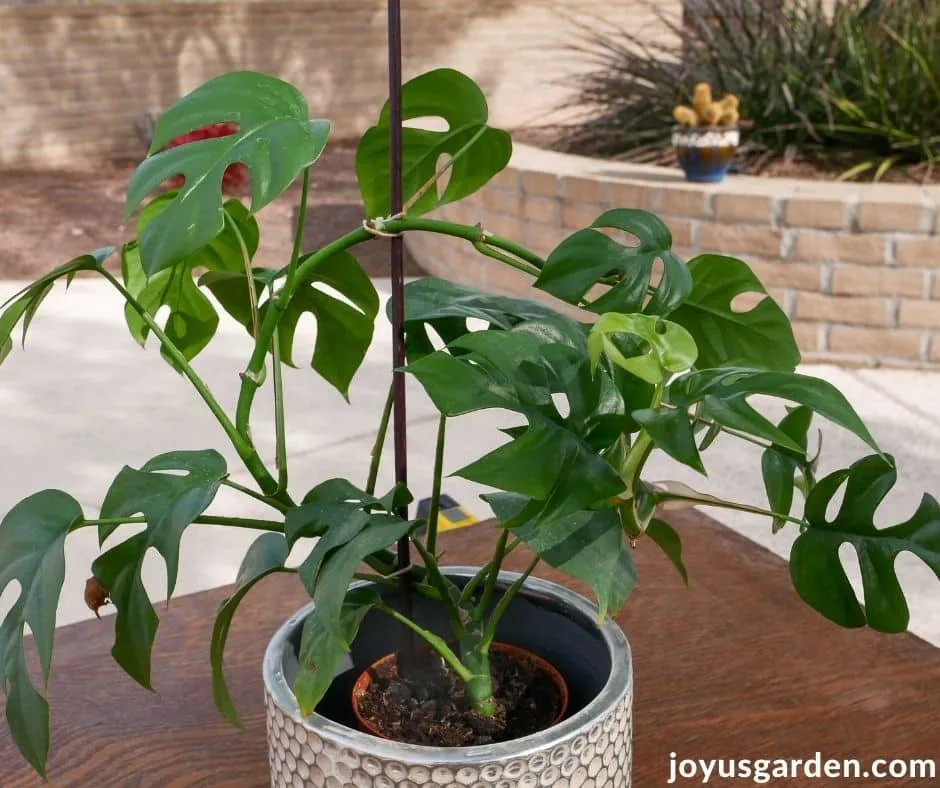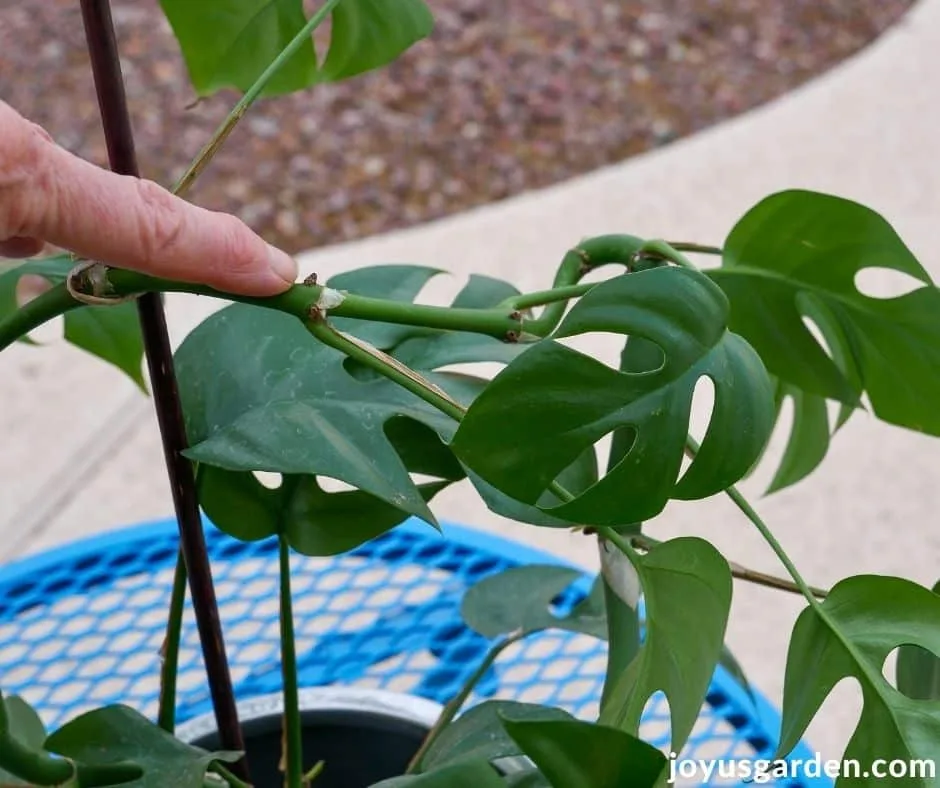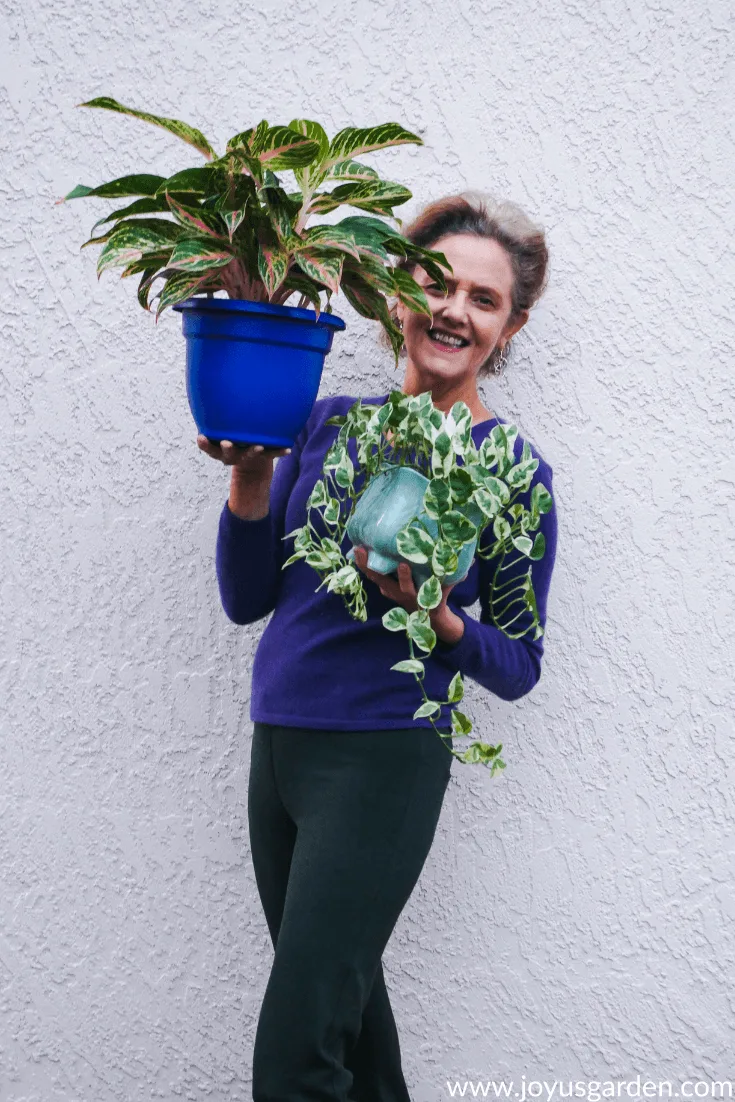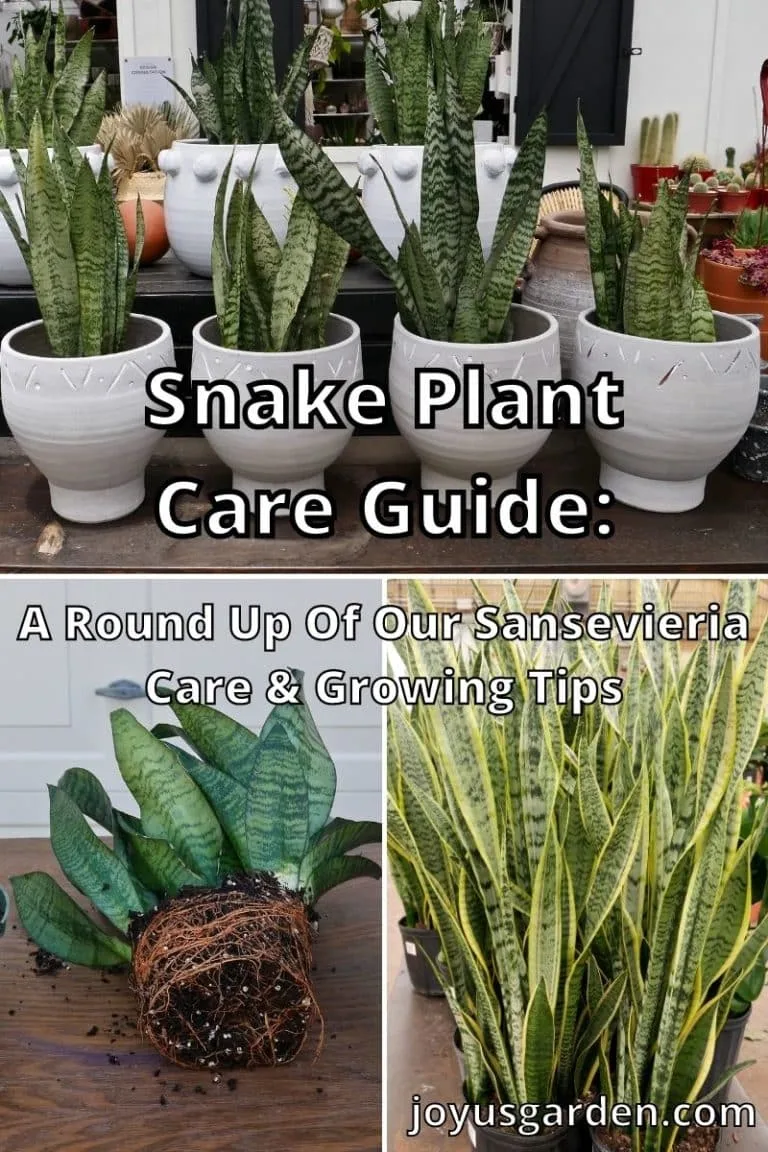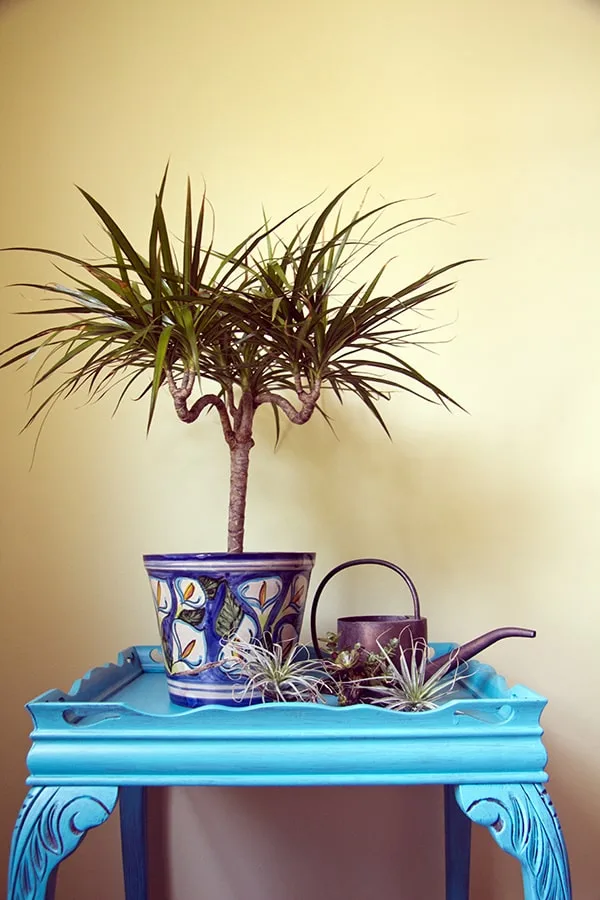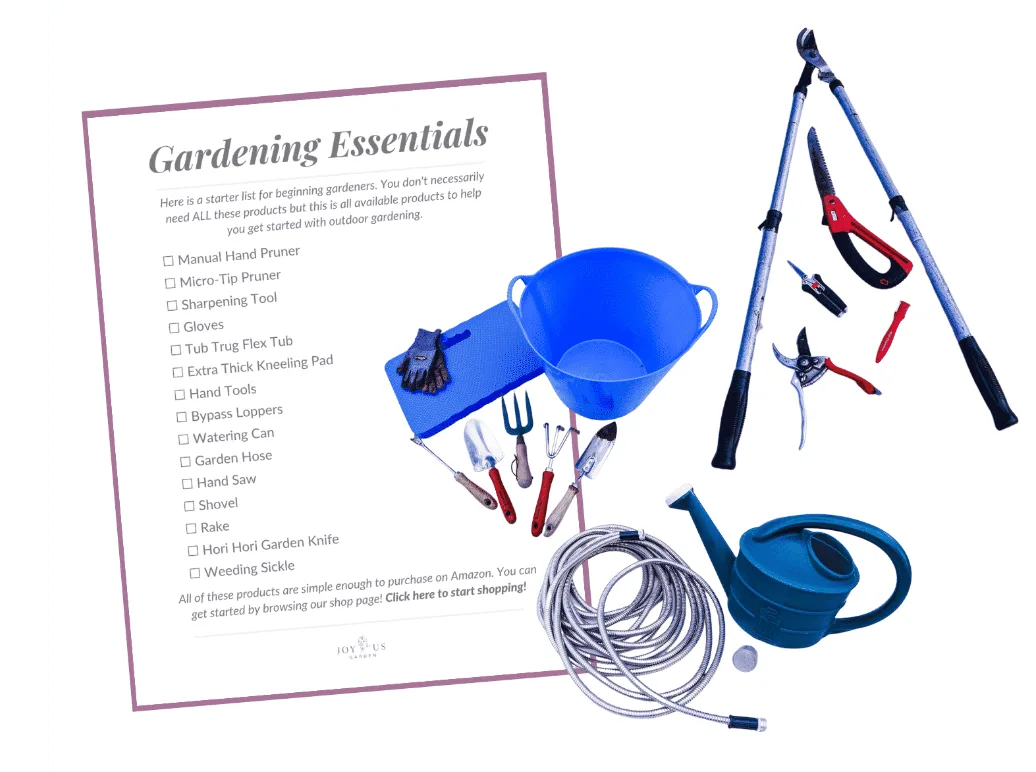Rhaphidophora Tetrasperma Care: How To Grow Monstera Minima
The Monstera minima is another easy-care houseplant that you’ll want to add to your collection. I love the foliage on this plant because it looks like it’s been cut out by hand, just like those cut-out snowflakes that we used to make as kids. Rhaphidophora tetrasperma care is a snap if you follow these growing tips.
I want to point out that this houseplant with the unique foliage and form goes by names other than Rhaphidophora tetrasperma and Monstera minima.
In case you’re searching, the other common names it’s known as are Mini Monstera, Monstera Ginny, Philodendron Piccolo, and Mini Split Leaf Philodendron.
Some Of Our General Houseplant Guides For Your Reference:
- Guide To Watering Indoor Plants
- Beginner’s Guide To Repotting Plants
- 3 Ways To Successfully Fertilize Indoor Plants
- How to Clean Houseplants
- Winter Houseplant Care Guide
- Plant Humidity: How I Increase Humidity For Houseplants
- Buying Houseplants: 14 Tips For Indoor Gardening Newbies
- 11 Pet-Friendly Houseplants
Monstera Minima Traits
Here are a few details on Monstera Minima to help you determine if it’s the right plant for you.
Uses
This is commonly sold as a tabletop plant. As it grows, it’ll become a floor plant. It can be trained to grow on a moss pole, trellis, hoop, piece of bark, etc
Size
You usually buy them growing in 4″ or 6″ pots. I’ve also seen them in one grower’s greenhouse in 10″ pots growing on moss poles.
Growth Rate
Mini Monsteras grow fast, especially in the warmer months. As it grows, it’ll need support and training as those stems get thick.
The highlights of Monstera Minima care:
Rhaphidophora Tetrasperma Care
Take note of these care tips for a healthy and thriving plant!
Light/Exposure
They prefer and do best in bright, natural light—what I would call a moderate exposure. Near but not in a window is good.
A Rhaphidophora tetrasperma will tolerate a bit of low light but you’ll see little if any growth. The plant will become very leggy and the foliage will get smaller in size. If in too much hot sun, the plant will burn.
Mine grows on a plant stand 10′ away from a south-facing window (moderate to high light) in my kitchen. It gets bright light all day long but no direct sun.
Rotate your Monstera minima if need be so the light hits it on both sides. You may have to move yours to a brighter spot as the light changes in the winter months.
Watering
Watering is key to Raphidiphora tetasperma care. I water mine when the top 1/3 of the soil mix is dry.
That tends to be every 7 days in the warmer months and every 10 – 14 days in winter. When I repot it into a larger pot, I won’t need to water quite as frequently.
A good general rule is to strike a happy medium and keep yours not too wet nor too dry. It may need to be watered more or less frequently than mine depending on the pot size, type of soil it’s planted in, the location where it’s growing, and your home’s environment.
Temperature
Average home temperatures are fine. If your home is comfortable for you, it’ll be so for your indoor plants too.
That being said, the Monstera minima loves warm temps (it’s native to Thailand and Malaysia) which will cause it to grow faster.
Be sure to keep yours away from any cold drafts as well as air conditioning or heating vents.
Humidity
This plant is native to the tropics. Despite this, it’ll do just fine in our homes which tend to have dry air.
Here in hot, dry Tucson, my Rhaphidophora is growing beautifully and only has a few tiny, dry tips.
I take mine to the kitchen sink every couple of weeks and give it a good spray to temporarily up the ante on the humidity factor.
If you think yours is looking stressed due to lack of humidity, then fill the saucer that sits under it with pebbles and water.
Put the plant on the pebbles but make sure the drain holes and/or the bottom of the pot aren’t submerged in any water. Misting a couple of times a week will help too.
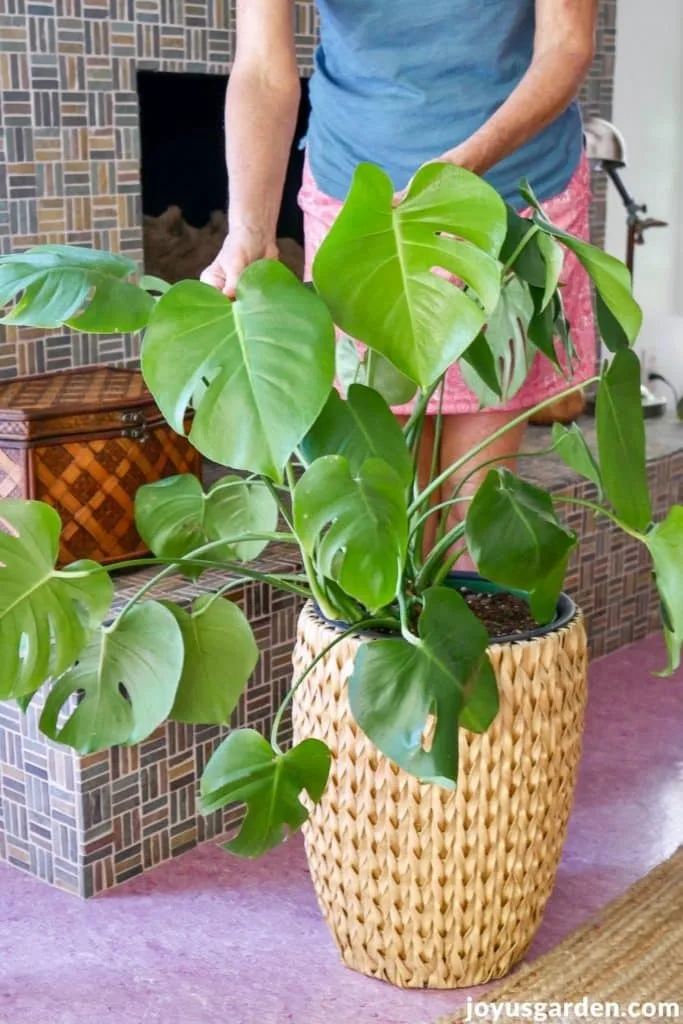
Fertilizing / Feeding
This is how I Feed Indoor Plants, including my Monstera minima. We have a long growing season here in Tucson and houseplants appreciate the nutrients these plant foods provide.
Once or twice a year might do it for your plant. It’s best to feed your plants in spring and summer, maybe into early fall if you’re in a warm climate.
Whatever you use, don’t fertilize your houseplants in late fall or winter because that’s their time for rest. Don’t over-fertilize (use more than the recommended ratio or do it too often) your plants because salts build up and can burn the roots of the plants. This shows up as brown spots on the leaves.
Avoid fertilizing a houseplant that is stressed, ie. bone dry or soaking wet.
Repotting
Repotting is integral to Rhaphidophora tetrasperma care just like any other houseplant. They don’t mind growing slightly pot-bound so you don’t have to repot every year.
This plant is a fast grower so you may need to repot it every 2-4 years depending on how yours is growing.
It’s best to go up 1 pot size. Mine is in a 4″ pot now and I’ll put it into a 6″ grow pot.
It’s early March as I write this and only 1 tiny root is peaking out a drain hole. I’ll do the repotting in late summer/early fall because the plant is getting top-heavy in proportion to the small grow pot and needs a bigger base.
Spring and summer are the best times for repotting. If you live in a temperate climate, early fall is fine too.
Related: Rhaphidophora Tetrasperma Repotting Guide
Soil
Monstera minimas like a mix rich in peat that is well-drained. I prefer to use coco fiber which is similar but a more sustainable alternative to peat moss.
This is the mix I use with approximate measurements:
- 1/2 potting soil. I alternate between Ocean Forest & Happy Frog.
- 1/2 coco fiber.
- I add in a few handfuls of coco chips (similar to orchid bark) and a few handfuls of compost.
- I end by top dressing with a 1/4 – 1/2″ layer of worm compost.
3 alternate mixes:
- 1/2 potting soil, 1/2 orchid bark or coco chips OR
- 3/4 potting soil, 1/4 pumice or perlite OR
- 1/2 potting soil, 1/2 coco fiber or peat moss
Training
I included this section because you’ll need to train your Rhaphidophora in some way as it grows. Moss poles are a common method of support but you can also use a smaller-sized trellis, piece of bark, or bamboo hoops.
You’ll need to attach the stem or stems onto the support with something like jute string or twine until those emerging roots can attach on their own.
Here’s how I Trained My Hoya and the DIY Trellis for my Swiss Cheese Vine.
Pruning
Not much is needed on the regular. My plant hasn’t gotten a yellow leaf and I’ve had it for well over a year.
You’ll need to prune a Mini Monstera to train it or to propagate it.
These plants get straggly or rangy in low light conditions so you may need to do some pruning to encourage fullness.
Propagation
Stem cuttings are the easiest way to propagate a Monstera minima. You’ll see tiny brown roots emerging out of the nodes on the stems. Those are the aerial roots used for anchoring their stems to other plants when growing in nature.
To propagate by stem cuttings, prune a stem right below a node and aerial root. Make sure your Pruners Are Clean & Sharp. The cutttings can then easily be put in water or a light mix to further root.
I prefer to propagate this plant in water in a clear container because that way I can see easily the progress the roots are making.
Pests
My Monstera minima has never gotten any pests. They can be susceptible to mealy bugs, scale, and spider mites so keep on the lookout for those. Pests tend to live inside the crevice where the leaf hits the stem and also under the leaves so check these areas from time to time.
It’s best to take action pronto because these pests multiply like crazy. They can travel from houseplant to houseplant fast so make you get them under control before an infestation breaks out.
Pet Safety
The Rhaphidophora tetrasperma, like other houseplants in the Araceae family, is considered to be toxic to pets. I always check out the ASPCA website for my info on this subject.
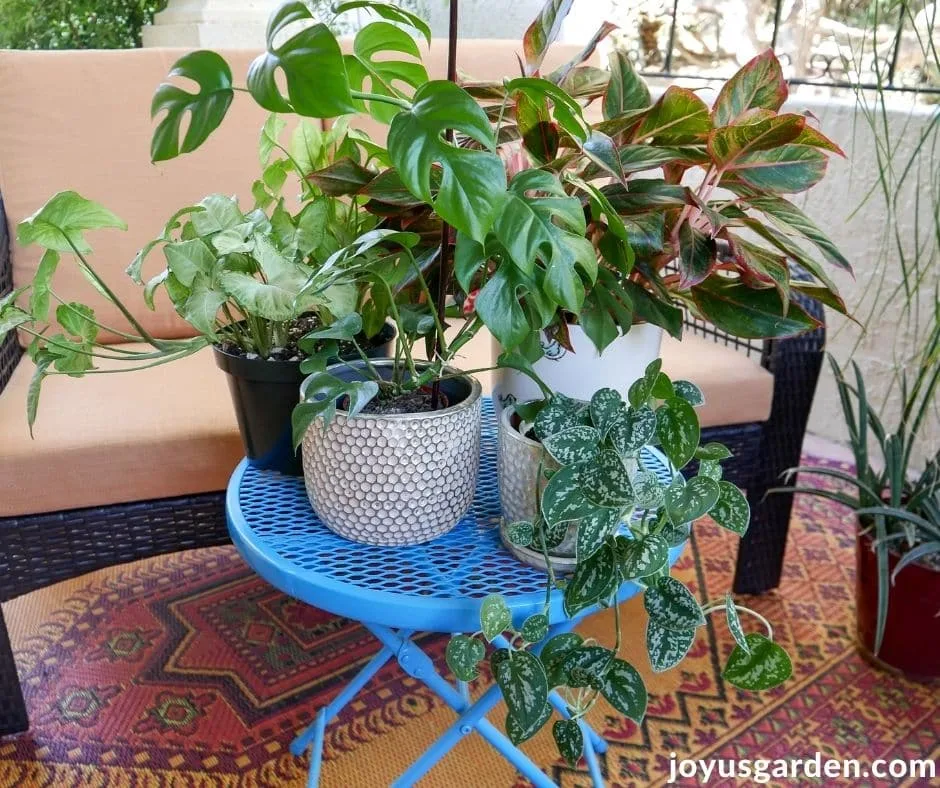
Rhaphidophora Tetrasperma Care FAQs
That is done by tip pruning or more extensive pruning. The extent of pruning needed to be done depends on how rangy your Tetrasperma is & how bushy you want it to be.
Common reasons would be too little water or heat stress. Too much water could cause it too.
Yes, it does. It climbs by attaching to whatever it’s growing on via the roots that emerge from nodes on the stems.
You make it climb by providing a means of support – moss pole, trellis, piece of bark, etc. Attach the stem(s) with something like jute twine so they stay adhered & the roots have something to grow onto.
The most common reasons would be: the roots have been kept too wet (due to watering too often &/or lack of drainage in the soil mix), the plant was growing in too much sun, or the soil has been kept dry for too long.
It’s hard for me to give you an exact schedule. Yours might need to be watered more or less frequently than mine depending on the pot size, type of soil it’s planted in, the location where it’s growing, your home’s environment, & what the season is.
The easiest & fastest way is via stem cuttings in water.
Stay tuned because I’ll be doing a post on repotting and training this beautiful plant coming up in 6 months or so.
Here are few online sources that currently have this plant in stock: Tropical Plants Florida, Garden Goods Direct, Greenery Unlimited
I’m not sure what form mine will ultimately take, but that’s the fun part. I hope you give this plant a try because Rhaphidophora tetrasperma care is a breeze!
Happy gardening,

